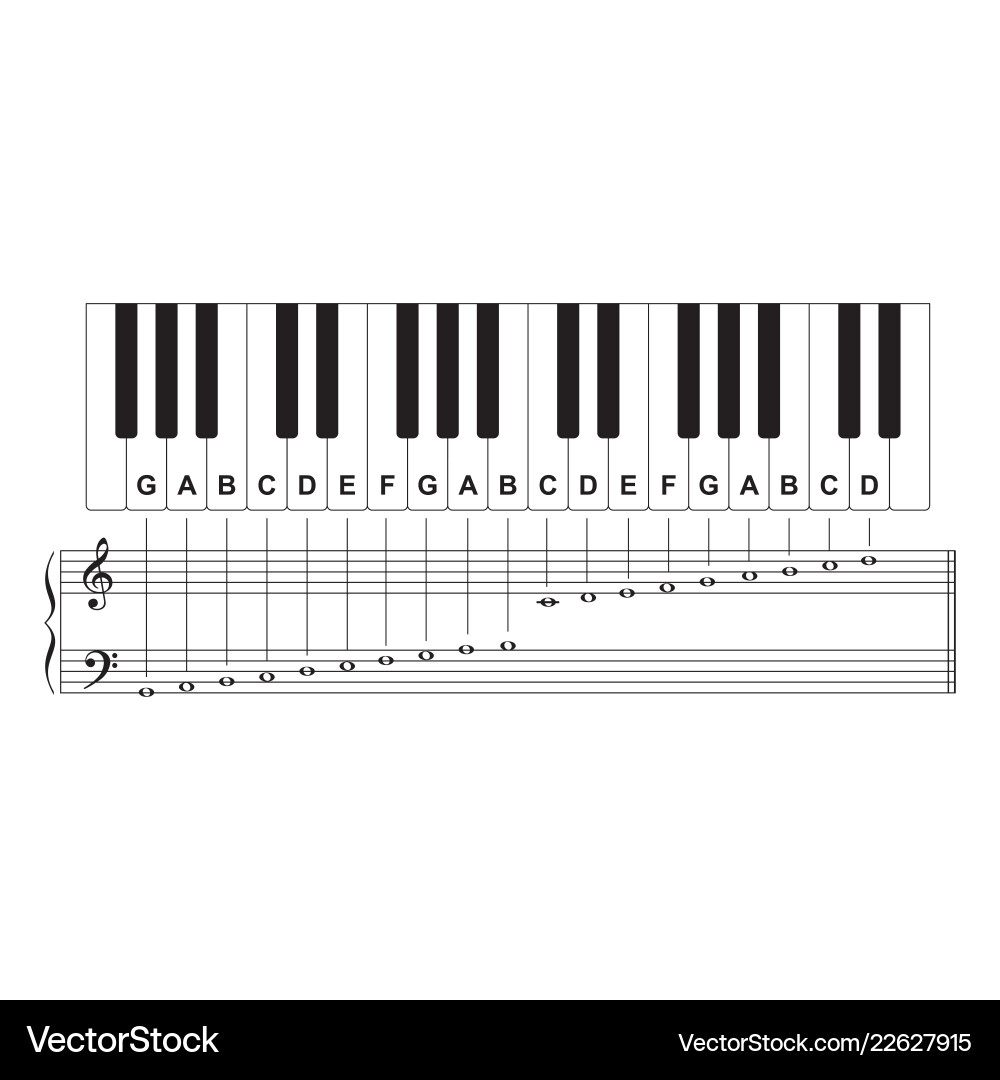Table of Contents
TogglePiano Keyboard Layout: Master the Musical Map
Have you ever looked at a piano and wondered how all those keys come together to create beautiful music? The piano keyboard layout might seem complex at first, but with a little guidance, you can master it.
Understanding the arrangement of keys is your first step toward unlocking a world of musical possibilities. This knowledge not only enhances your playing skills but also boosts your confidence as you navigate each melody. Imagine sitting at a piano, your fingers effortlessly gliding over the keys, creating harmonious tunes.
This feeling is within reach, and it starts with understanding the keyboard layout. By the end of this article, you’ll be equipped with the insights you need to make sense of the keys, empowering you to play with ease and precision. Dive in to discover how this essential knowledge can transform your musical journey.

Credit: www.loudlandsmusic.com
Piano Keyboard Basics
Understanding the piano keyboard layout is crucial for anyone starting their musical journey. It’s like learning the alphabet before writing a story. Each key on a piano has a unique role, and together, they create the beautiful melodies we all love. Let’s dive into the basics and explore how the keys, octaves, and Middle C play a part in your musical adventure.
White And Black Keys
The piano keyboard is a blend of white and black keys. The white keys are the natural notes: A, B, C, D, E, F, and G. They repeat in the same sequence throughout the keyboard.
Black keys are the sharps and flats. They are positioned between the white keys and serve as the semitones. For example, the black key between C and D is both C# and Db.
Try playing a simple tune using just the white keys. Notice how the melody sounds complete? The black keys add flavor and depth to your music.
Octave Structure
An octave is a series of eight notes. It starts from any given note and ends on the same note at a higher pitch. The piano keyboard is divided into several octaves.
Each octave follows the same pattern of white and black keys. Recognizing this pattern helps you navigate the keyboard easily.
Can you identify the octaves on your keyboard? Practice playing scales over different octaves to understand their structure better.
Middle C Reference
Middle C is your anchor on the piano. It’s the C note located near the center of the keyboard. This note is crucial for orientation.
When you start learning piano, Middle C is often your starting point. It helps you position your hands correctly on the keyboard.
Visualize Middle C as the center of your musical map. How does locating Middle C change your approach to playing? Try playing a tune starting from Middle C and feel the difference.

Credit: www.vectorstock.com
Understanding Notes And Scales
Understanding notes and scales on a piano keyboard can be an exciting journey. It’s the foundation for making beautiful music and can enhance your playing skills significantly. Whether you’re just starting out or looking to refine your technique, grasping the basics of scales and notes can open up a world of musical possibilities.
Major And Minor Scales
Major scales are often associated with happy, uplifting sounds. They follow a specific pattern of whole and half steps. Think of the C Major scale: it starts with C and uses only white keys.
Minor scales, on the other hand, evoke a more somber or serious tone. The A Minor scale is a great starting point. Notice how it shares the same notes as the C Major scale but centers around A.
Have you ever noticed how your favorite songs can change your mood? The choice between major and minor scales plays a big part in that. Try playing a major scale followed by a minor scale. How does each make you feel?
Chromatic Scale
The chromatic scale includes all twelve notes within an octave. This means playing every key, both white and black, in sequence.
It’s a fantastic exercise for finger dexterity. Try playing the chromatic scale starting from any note and using all fingers equally. It helps you become comfortable with every key on the keyboard.
Using the chromatic scale, you can create tension in your music. It’s often used in dramatic pieces. Try adding a few chromatic notes to your playing and feel the difference.
Intervals And Chords
Intervals are the spaces between notes, and they form the basis for chords. A simple interval is the distance between two notes, like C and E.
Chords are groups of notes played together. A C Major chord includes C, E, and G. It’s one of the most commonly used chords in music.
Experiment with intervals and chords. Play a C Major chord and then shift to A Minor. Notice how the mood changes. How can you use this to express emotions in your music?
Understanding notes and scales empowers you to create music that resonates. As you practice, consider how each concept connects with your musical goals. What emotions do you want to convey? What stories do you want to tell through your music?
Navigating The Keyboard
Exploring the piano keyboard layout helps beginners understand the arrangement of keys. White keys represent natural notes, while black keys indicate sharps and flats. Identifying patterns like groups of two and three black keys simplifies learning scales and chords.
Navigating the piano keyboard can feel daunting at first. With many keys, the layout might seem complex. But it’s simpler than it looks. Understanding the keyboard helps in playing smoothly and with confidence. Let’s break down the essentials.
Identifying Key Signatures
Key signatures are crucial in music. They tell us the scale of the piece. On a keyboard, you will find two types of keys: white and black. White keys represent natural notes like C, D, and E. Black keys are sharps and flats. Each group of black keys has a pattern. Two keys together, then three. This pattern repeats across the keyboard. It helps locate notes easily.
Finding Notes Quickly
Finding notes quickly is vital for playing music. Locate the middle C first. It sits near the center of the keyboard. From there, count notes to find others. The pattern of black keys aids in this. The two black keys are near C and D. The three are near F, G, and A. Practice helps increase speed and accuracy.
Hand Positioning Techniques
Proper hand positioning is key for fluid playing. Keep hands relaxed and fingers curved. Place thumbs on the middle C and F notes. Other fingers should rest naturally on adjacent keys. This position is called the home base. It allows for easy movement. Practice scales to improve finger strength and flexibility.
Advanced Keyboard Techniques
Advanced keyboard techniques can take your piano skills to new heights. They enhance your playing and add depth to your music. By focusing on specific techniques, you can improve your performance dramatically. These techniques include arpeggios, expressive dynamics, and pedal usage. Each technique has its unique role in creating beautiful music.
Arpeggios And Runs
Arpeggios involve playing notes of a chord separately. They create a flowing, cascading sound. Runs are rapid sequences of notes played smoothly. Both require finger agility and precision. Practicing arpeggios improves your hand coordination. Runs enhance your speed and fluidity. Together, they add excitement and variety to your music.
Expressive Dynamics
Dynamics bring emotion to your music. They range from soft whispers to loud, powerful sounds. Control of dynamics involves varying your touch. Soft notes require gentle pressure. Loud notes need more force. This helps convey the mood of the piece. Mastering dynamics makes your performance more engaging.
Pedal Usage
The pedal is a vital tool for pianists. It enriches the sound by sustaining notes. Proper pedal usage adds depth to your music. Use the pedal to connect phrases smoothly. It also helps emphasize important notes. Learning to use the pedal effectively enhances your musical expression.
Practice And Mastery
Understanding the piano keyboard layout is crucial for practice. Each key represents a note, forming patterns that guide musicians. Familiarity with this layout enhances skill development, allowing for smoother transitions between notes and chords.
Mastering the piano keyboard layout is a journey filled with practice and discovery. As you navigate this path, it’s essential to focus on consistent practice to enhance your skills. Whether you are a beginner or an experienced pianist, prioritizing daily exercises, strengthening your fingers, and expanding your repertoire are crucial steps.
Daily Exercises
Consistency is key in developing your piano skills. Dedicate a specific time each day for practice, even if it’s just 15 minutes. Short, focused sessions can be more effective than sporadic, lengthy ones. Consider incorporating scales, arpeggios, and simple melodies into your routine. These exercises build muscle memory and enhance your familiarity with the keyboard layout. Track your progress using a journal or app. This accountability helps you stay motivated and see tangible improvements over time.
Finger Strength And Agility
Strong, agile fingers are essential for smooth piano playing. Start with simple finger exercises that target different parts of your hand. An exercise such as the Hanon finger drills can significantly enhance your dexterity. Practice slow and steady, gradually increasing speed without sacrificing accuracy. Don’t ignore the importance of relaxing your hands and wrists. Tension can impede your progress, so always maintain a comfortable posture at the keyboard.
Building Repertoire
Diversifying your repertoire is both fun and beneficial. Choose pieces that challenge you but are also enjoyable to play. Mix genres to develop versatility, from classical to jazz or pop. This variety keeps practice sessions exciting and broadens your musical understanding. Ask yourself: what music moves you? Let your passion guide your selections. Playing pieces you love will motivate you to practice more and master the keyboard layout effortlessly.

Credit: www.piano-keyboard-guide.com
Frequently Asked Questions
What Is The Standard Piano Keyboard Layout?
A standard piano keyboard has 88 keys, including 52 white and 36 black keys. The pattern consists of repeating sets of seven white keys (C, D, E, F, G, A, B) and five black keys grouped in twos and threes.
This layout allows for a wide range of musical expression.
How Is A Piano Keyboard Arranged?
A piano keyboard consists of 88 keys. It includes 52 white keys and 36 black keys. White keys represent natural notes: A, B, C, D, E, F, and G. Black keys are grouped in sets of twos and threes, representing sharps and flats.
This pattern repeats across the keyboard.
Should A Beginner Use 61 Or 88 Keys?
Beginners can start with 61 keys for learning basics. It’s compact and affordable. For classical or advanced music, 88 keys offer a full range. Consider your musical goals and space before choosing.
What’s The Difference Between Uk And Us Keyboard Layout?
UK keyboards have a larger “Enter” key and a “£” symbol. US keyboards feature a smaller “Enter” key and a “@” symbol above the number 2. The UK layout also shifts some punctuation keys. Both layouts differ slightly in key placement and symbols.
Conclusion
Understanding the piano keyboard layout simplifies your learning journey. Each key has its unique sound and role. Practice regularly to familiarize yourself with the notes. This will enhance your playing skills over time. Remember, patience is key. Don’t rush the process; enjoy it.
The more you play, the better you get. Learning piano is a rewarding experience. It’s not just about the notes, but the joy of music. Keep playing and exploring. Your effort will lead to beautiful music. Enjoy every moment on your musical journey.
